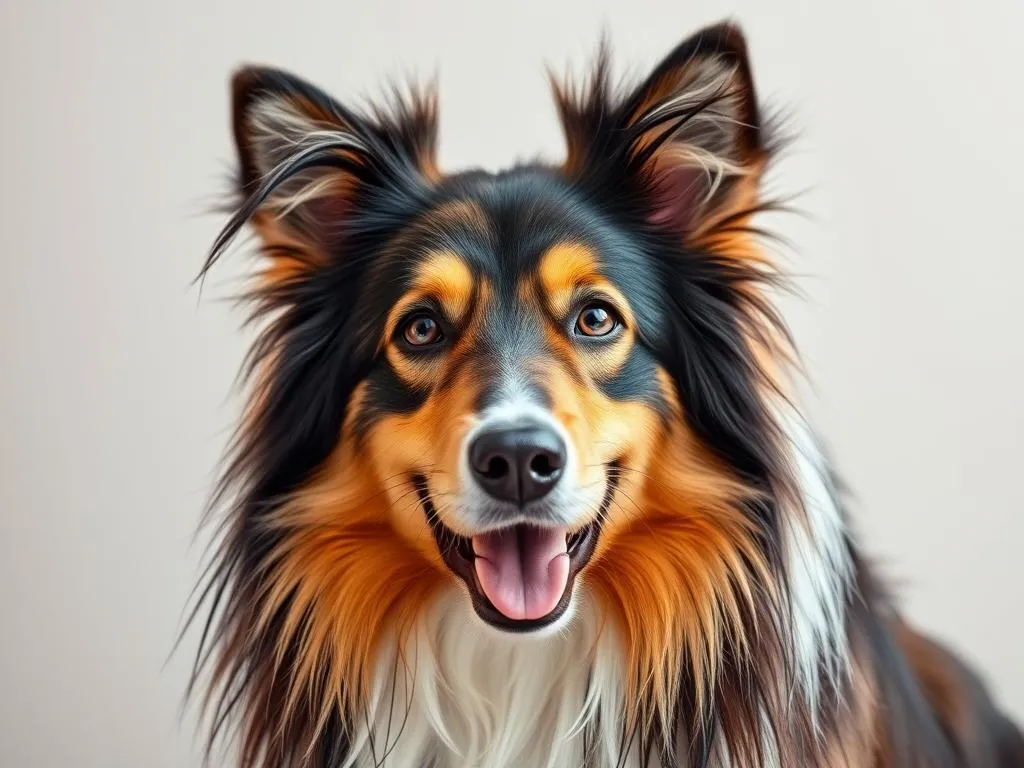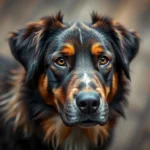
Introduction
The Shetland Sheepdog, commonly known as the Sheltie, is a beloved breed known for its intelligence, agility, and affectionate nature. Originating from the Shetland Islands of Scotland, these dogs were initially bred for herding sheep and other livestock. Over the years, they have become popular as family pets due to their loyal and friendly demeanor.
One aspect of Shelties that captivates both potential owners and enthusiasts alike is their sheltie colors. While the breed is recognized for its gentle temperament and intelligence, the various colors and patterns of their coats also play a significant role in their appeal. The color of a Sheltie can impact not only their beauty but also how they are perceived in competitions and breed standards.
This article aims to provide a comprehensive guide to the different sheltie colors, helping potential owners and lovers of the breed understand the significance of color while also delving into the genetics, grooming needs, and the role colors play in competitions and shows.
Understanding Sheltie Coat Types
Coat Structure
Shelties are characterized by their beautiful double coat, which consists of a soft undercoat and a longer outer coat. The undercoat is dense and provides insulation, while the outer coat is straight and serves as protection against the elements. This unique coat structure is essential for a Sheltie’s overall health and well-being.
Sheltie Grooming Needs
Maintaining a Sheltie’s coat requires consistent grooming, particularly due to its double-layered nature. Regular brushing is crucial for preventing matting and reducing shedding, which can vary based on their sheltie colors. Here are some grooming tips based on coat color:
- Tri-Color and Sable: These colors may require more frequent brushing to manage visible debris and maintain shine.
- Blue Merle: The striking patterns can hide dirt, but regular grooming ensures their coat remains healthy.
- Black and Other Rare Colors: These coats can show dust and dirt more prominently, necessitating regular cleaning.
Common Sheltie Colors
Tri-Color
The tri-color Sheltie is one of the most recognizable variations, characterized by its black, white, and tan markings. The black is the dominant color, while the white is typically found on the face, chest, and feet, with tan accents often seen above the eyes and on the legs. Tri-color Shelties are particularly popular among enthusiasts and are known for their striking appearance and friendly nature.
Sable
Sable Shelties are characterized by a gold to mahogany hue, often with black-tipped hairs that give a beautiful shading effect. There are variations within this category, including golden sable and mahogany sable. Many people mistakenly think that all sable Shelties look the same, but the shades can vary greatly, contributing to each dog’s unique appearance. Sables are often considered to be one of the most aesthetically pleasing variations, making them highly sought after.
Blue Merle
The blue merle Sheltie features a striking pattern with a mix of blue-gray and black patches. This coloration is the result of a specific genetic pattern that creates unique swirls and spots in the coat. Blue merles are known for their distinctive looks, but they may also be more susceptible to certain health issues due to the merle gene. It’s essential for potential owners to understand these risks when considering this color.
Black
While not as common as other colors, black Shelties are a beautiful variation that comes with a sleek, shiny coat. Black Shelties must meet specific breed standards, and although they are rare, they are equally loved by enthusiasts. Their unique appearance often leads to interesting trivia, such as their historical significance in the breed’s development as working dogs.
Other Colors
In addition to the common colors mentioned, Shelties can also come in a variety of less common shades such as chocolate and brindle. These variations are quite rare and can be a delightful surprise for breeders and owners. The rarity of these colors often adds to their appeal, making them sought after by collectors and enthusiasts alike.
Genetic Factors Influencing Sheltie Colors
Understanding Genetics
The colors seen in Shelties are a fascinating aspect of canine genetics. The basic principles of dog coat color genetics involve dominant and recessive traits, which determine the final appearance of a dog’s coat. In Shelties, several genes interact to create the variety of colors and patterns observed.
Color Inheritance Patterns
Sheltie color inheritance can be complex. For example, a sable Sheltie bred to a tri-color Sheltie may produce puppies with a mix of both colors. It’s essential for breeders to understand these inheritance patterns to predict the potential colors of their litters accurately.
The Role of Color in Sheltie Shows and Competitions
Breed Standards
The American Kennel Club (AKC) recognizes several colors for Shelties, with specific standards for each. Adhering to these standards is crucial for dogs participating in competitions. Judges often consider color as part of the overall evaluation, and a dog that does not meet the breed’s color standards may be at a disadvantage in the show ring.
Judges’ Perspectives
Judging Shelties in competitions involves a keen eye for both physical attributes and coloring. Judges assess how well the dog adheres to breed standards, including coat color and pattern. Notable Shelties, such as champions in various competitions, often showcase the beauty of their colors, helping to elevate the breed’s status and desirability.
Choosing a Sheltie Based on Color
Personal Preferences
When selecting a Sheltie, color can be a significant factor for many potential owners. However, it is crucial to consider aspects beyond color, such as temperament and overall health. Each color variation may carry unique characteristics, but the dog’s personality and compatibility with your lifestyle should ultimately guide your choice.
Finding a Responsible Breeder
If you are keen on a specific color, finding a responsible breeder is essential. Look for breeders who prioritize the health and genetic integrity of their dogs, as well as color. Ask questions about their breeding practices and the genetic background of the puppies, ensuring that the colors are a result of healthy breeding rather than unethical practices.
Caring for Your Sheltie’s Coat Based on Color
Grooming Tips for Different Colors
Different sheltie colors may require specific grooming techniques to maintain their beauty. Here are some tips:
- Tri-Color: Use a slicker brush to manage the outer coat and a comb for the undercoat.
- Sable: Regular brushing keeps the coat shiny and reduces shedding.
- Blue Merle: Pay attention to the unique patterns, ensuring that the coat remains tangle-free.
- Black: Regular bathing can enhance their natural shine, while appropriate grooming tools help maintain the coat.
Managing Seasonal Changes
Seasonal changes can significantly affect Sheltie coats. During shedding seasons, more frequent grooming is necessary to manage loose hair. Additionally, consider the coat’s condition with changes in weather, ensuring your Sheltie is comfortable regardless of the season.
Conclusion
In summary, sheltie colors play an essential role in the breed’s appeal and aesthetic. From the striking patterns of blue merles to the classic beauty of tri-color and sable variations, each coat color offers something unique. As potential owners consider bringing a Sheltie into their lives, it’s important to look beyond color and also consider temperament, health, and the responsibilities that come with dog ownership.
Understanding the various aspects of Sheltie colors—from genetics to grooming needs—can help enthusiasts appreciate this beautiful breed even more. Whether you are a long-time Sheltie lover or a first-time owner, embracing the rainbow of sheltie colors is an exciting part of the journey!









